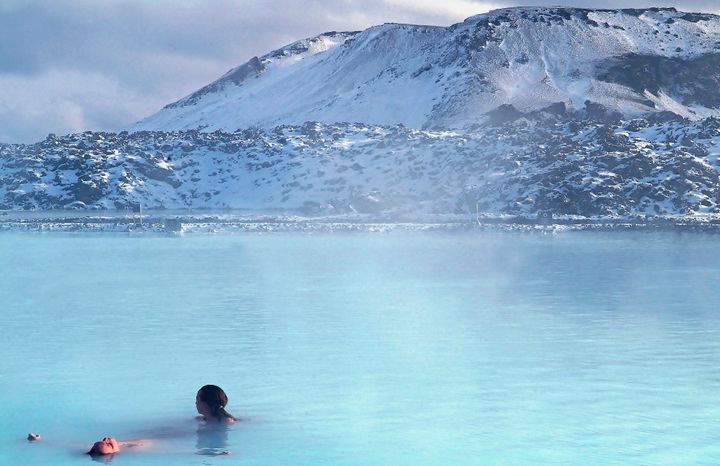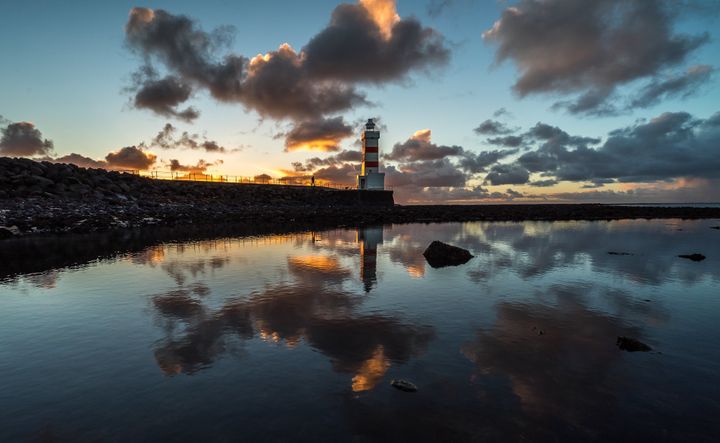You don’t need science to tell you that time spent out in nature can soothe your stressed-out mind, clear your head of the daily grind and and dose you up on perspective. But getting outdoors can bring you physical benefits, too. A recent study from the University of East Anglia, which crunched global data taken from 290 million people, shows that exposure to green spaces can reduce your risk of type II diabetes, cardiovascular disease, stress and high blood pressure.
One country where people have a real connection to a wild, vast and often awe-inspiring landscape? Iceland. With its dizzy night-time sky light displays, outdoor pools heated by volcanos and glaciers that look like something out of white witch-ruled Narnia, it’s a place that tunes you how alive the earth is, without really trying.
“We know that moving around and being outdoors is good for our mental health, and, in Iceland, you’re so close to nature. Even if you’re in the capital, you can drive for 20 minutes and go hiking or sit in a hot spring,” says Eliza Reid, an Iceland-living Canadian writer and journalist who is married to the nation’s President. “There’s all kinds of outdoor activities.”
Here’s some of the most spectacular.
The Northern Lights

Or Aurora Borealis, to give the lights their more romantic title (‘aurora’ is the Roman goddess of dawn, ‘borealis’ is the Latin for ‘Northern.’) The result of solar winds hitting the earth’s atmosphere, which causes oxygen and nitrogen particles to glow before performing gymnastics of neon greens and violets, they’re a jaw-dropping natural phenomenon that coaxes thousands of visitors a year to the country.
“You can see them pretty much anywhere, if you stay mobile, [i.e. rent a car]” Icelandic astronomer Sævar Helgi Bragason tells HuffPost UK. “So long as you leave the city. Wherever you are in the country, look up a tour - the smaller ones are best - so that you increase your chances of seeing the show.” You can also check out Bragason’s website, auroraforecast.is, which uses real time data on solar winds to calculate how high your chances are of getting a good view, on a specific night.
Also: don’t rush them. “Most aurora tours take place between 9pm and 1am,” Bragason says. “This morning, I saw them just after 12am - but a lot of people start to give up and go back around that time. You need to wrap up very warm and be patient.”
Geothermal pools

“Just as you wouldn’t go to the UK without going to a pub, you wouldn’t come to Iceland without visiting a pool,” says Reid, who studied for her masters at Oxford University and spent a few years working in Basingstoke.
But this isn’t your local chlorine-soaked rectangle. In Iceland, outdoor pools are naturally heated by underlying volcanic activity - so you can swim, or just hang out, underneath the skies.
The most famous is the highly Instagrammed Blue Lagoon, located in Grindavík in the Reykjanes Peninsula. It’s also the site of “around six proposals a day,” Atli Sigurður Kristjánsson, the site’s Marketing Director, tells HuffPost UK. But every town will also have a smaller operation, which are more akin to a sort of cafe. “We’ll often have Sunday dinner and then go to a pool as a family,” says Reid. “It’s such a nice way of relaxing.”
Other big name spots include The Secret Lagoon in the village of Fludir (about an hour and a half’s drive out of Reykjavík). Here, you can sink into pools between mossy banks and under expansive skies. The Mývatn Nature Baths is another popular pool in the north-east of the country - but every town you land in will have a small set-up.
(If you want to access all of the pools in Reykjavík, as well as all of the town’s museums, galleries and public transport, it’s worth buying a Reykjavík City Card, which gives you all-inclusive access to all of the above. It’ll save you cash if you visit more than two museums, versus paying as you go.)
Reykjanes peninsula

If you’re looking to feel startled by the sheer velocity of nature, then a day spent seeing the sights of this area - super close to Keflavik airport - is a good shout.
The peninsula is a UNESCO Global Geopark and is a hotbed of geothermal and volcanic activity and black sand beaches, giving it a feel of Mordor’s non-evil twin sister.
Head to the Bridge Between Continents: a site at which the Eurasian and North American tectonic plates can be seen to be drifting apart. As the plates pull, gradually, away from one after, fractures caused by the tension that builds up form. At the bridge, you can cross over one of the major fissures.
To get a panoramic view of the area, head to Reykjanes lighthouse take in the moody blue waters and homes scattered below. Drive from here onto Gunnuhver, an area full of hot mud pools, warmed up by boiling geothermal water, lying underneath them, causing huge billows of steam to billow out. Close by, for lunch and caffeine, is organic, healthy-eating restaurant Hjá Höllu, a few minutes away from the Blue Lagoon. As well as grilled breads with pesto, fresh fish and vegetable juices, they do takeaway bags filled with a day’s worth of eats, to save sad trips to the petrol station for limp sandwiches.